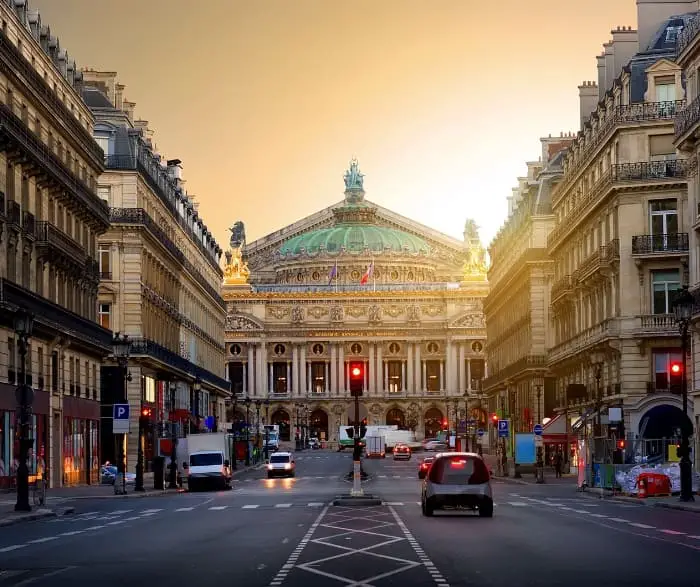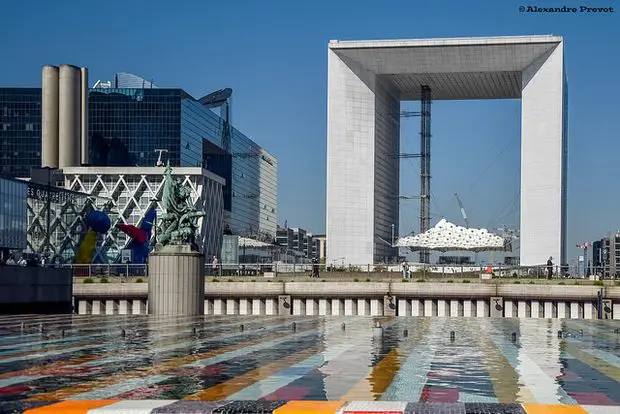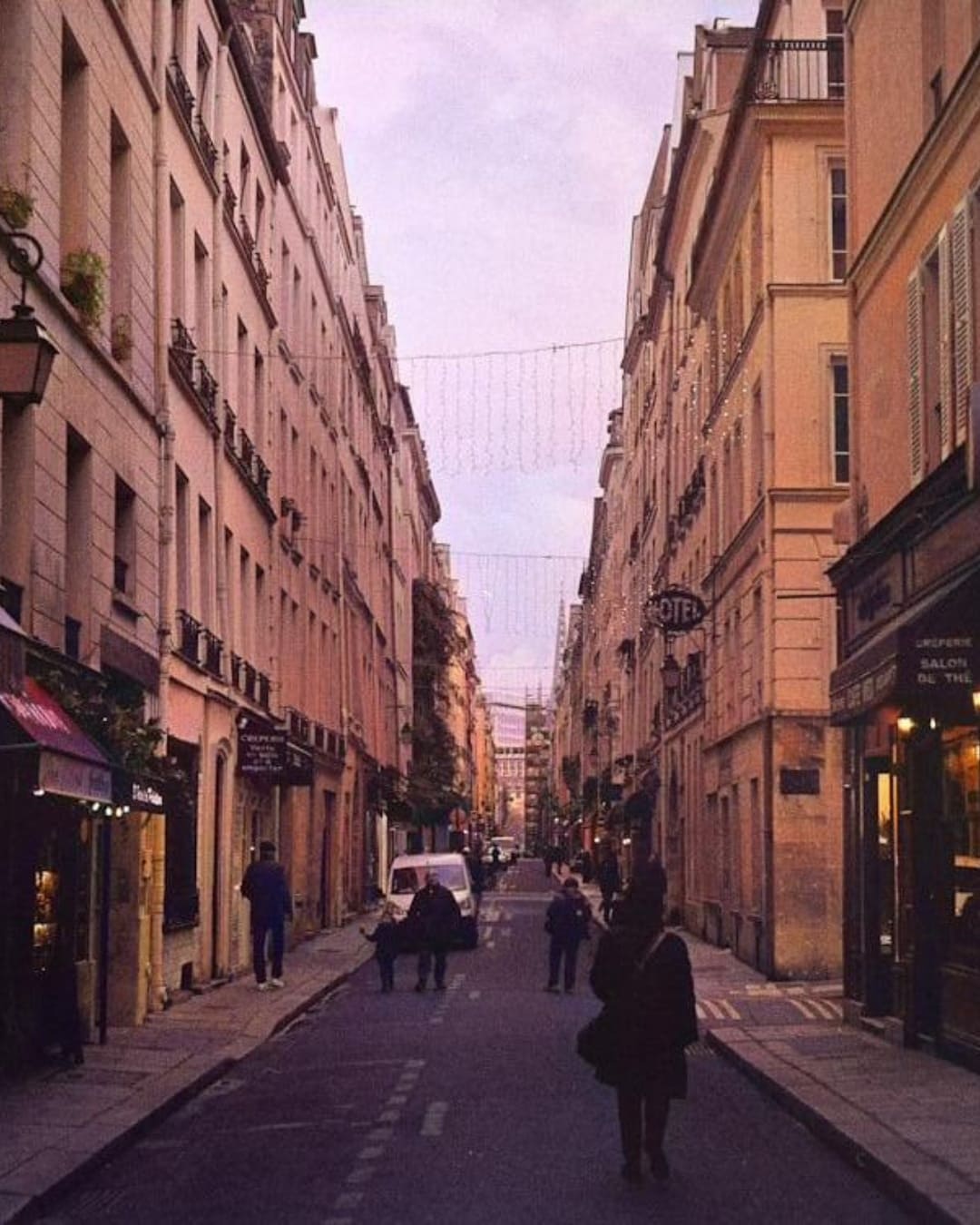The Latin Quarter in Paris is one of the city’s most historic and lively neighborhoods. Known for its charming streets, famous landmarks, and vibrant atmosphere, it’s a must-visit for anyone exploring Paris. From ancient churches to bustling markets, this area is full of things to see and do.
First, here are the places mentioned, located on a map:
Want a version of this map you can print or save on your phone?
I’ve created a pack with 13 one-page neighborhood maps—including this one. Each map comes with a quick guide and a QR code that links back to the full guide and the custom Google Map. Perfect for trip planning or exploring on the go.
Rue Mouffetard
Voir cette publication sur Instagram
Rue Mouffetard is one of Paris’s oldest streets, full of charm and life.
It’s lined with markets, cafés, and local shops, making it the perfect place to stroll and soak in the Parisian vibe.
You can grab a fresh croissant or explore small stores selling cheese, wine, and more.
Bouquinistes Along the Seine
Voir cette publication sur Instagram
The bouquinistes are small green bookstalls by the Seine River.
These stalls sell vintage books, posters, and postcards and are a great way to discover unique souvenirs.
Walking by the river while browsing these treasures feels like stepping back in time.
Rue de la Huchette
Voir cette publication sur Instagram
This lively street is full of restaurants, bars, and small shops.
It’s perfect for an evening stroll or a bite to eat, offering everything from crêpes to French onion soup.
The narrow, cobblestone street gives you a taste of old Paris.
Saint-Étienne-du-Mont Church
Voir cette publication sur Instagram
This beautiful church near the Panthéon is a hidden gem.
It’s known for its stunning stained glass, carved staircase, and peaceful atmosphere. Inside, you’ll find the shrine of Saint Genevieve, the patron saint of Paris.
It’s a must-see for history lovers.
Panthéon
Place du Panthéon, 75005 Paris
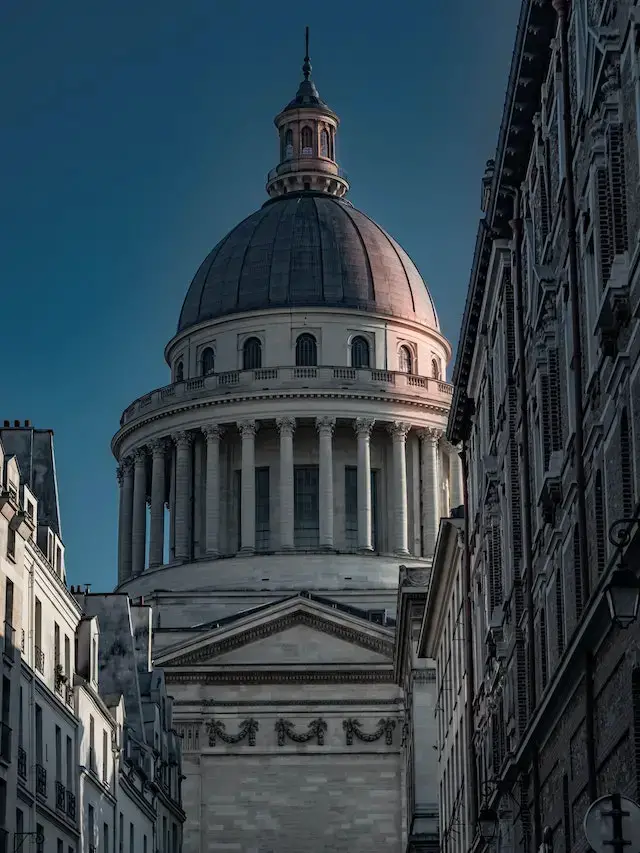
An emblematic monument in the Latin Quarter, the Panthéon is a burial place for illustrious French personalities.
It houses the tombs of Voltaire, Rousseau, Victor Hugo, Émile Zola, and Marie Curie, among others.
With its neoclassical façade and interior decorated with Corinthian columns, frescoes, and sculptures, it’s an impressive setting in which to discover the history of France’s great figures.
Its colonnade also offers a breathtaking view of Paris.
Highlights:
- The solemn atmosphere
- The impressive architecture and view of Paris from the colonnade
Musée de Cluny
28 rue du Sommerard, 75005 Paris
Voir cette publication sur Instagram
The Musée de Cluny is dedicated to medieval art and history. It houses a vast collection of objects ranging from the Gallo-Roman era to the Renaissance.
Among the highlights of the collection are the famous Lady and the Unicorn tapestries, considered masterpieces of medieval art.
The building itself is an architectural treasure trove, with its towers, turrets, and picturesque medieval garden.
It offers an immersion into the atmosphere of medieval times, allowing visitors to discover the art, crafts, daily life, and beliefs of this fascinating period of history.
Highlights:
- The collections, which take us back in time
- The medieval architecture
Shakespeare and Company
37 rue de la Bûcherie, 75005 Paris
Voir cette publication sur Instagram
Shakespeare and Company is an iconic bookshop located in the Latin Quarter.
Founded in 1951, it has become an essential meeting place for literature lovers, writers, and travelers from all over the world.
As well as selling books, Shakespeare and Company regularly organizes literary events such as readings, debates, and author signings.
The bookshop has become a veritable cultural institution in Paris, attracting literary enthusiasts from all over the world.
Highlights:
- The unique atmosphere of this old-fashioned bookshop
- The lovely literary finds
Jardin des Plantes
57 rue Cuvier, 75005 Paris
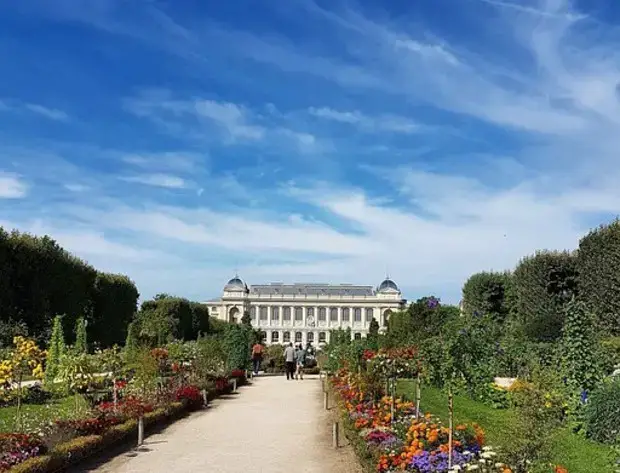
The Jardin des Plantes is a botanical garden founded in 1626 and is one of the oldest in the world.
The garden offers a green oasis in the heart of the city, with a wide variety of landscaped areas, greenhouses, and themed gardens. More than 10,000 species of plants, some of them rare and exotic, can be found here.
It features magnificent tree-lined avenues, verdant lawns, and picturesque ponds. Visitors can stroll, picnic, and enjoy the tranquility of this verdant space.
Highlights:
- The garden’s relaxing, friendly atmosphere
- The variety of plants that arouses curiosity
The Great Gallery of Evolution
36 rue Geoffroy-Saint-Hilaire, 75005 Paris
Voir cette publication sur Instagram
The Great Gallery of Evolution is a museum dedicated to the diversity of life on Earth and the evolution of species.
The gallery itself is an impressive space, with majestic architecture and huge display cases.
It houses a vast collection of naturalized animals from different parts of the world. Specimens ranging from the smallest insects to the largest mammals are displayed in reconstructed scenes, recreating their natural habitats.
The Great Gallery of Evolution also aims to raise public awareness of the importance of nature conservation and the need to preserve biodiversity.
Highlights:
- The impressive collections of stuffed animals
- The immense galleries that make you feel so small
Arènes de Lutèce
49 rue Monge, 75005 Paris
Voir cette publication sur Instagram
The arènes de Lutèce were once a Roman amphitheater where public spectacles such as gladiator fights and theatrical performances took place. They could accommodate up to 15,000 people.
Although the arenas were abandoned and forgotten for centuries, they have now been restored and are open to the public, offering a fascinating insight into Roman history in Paris.
Highlights:
- The ancient charm of the place
- A glimpse of Ancient Rome in the heart of Paris
Luxembourg Gardens
Jardin du Luxembourg, 75006 Paris
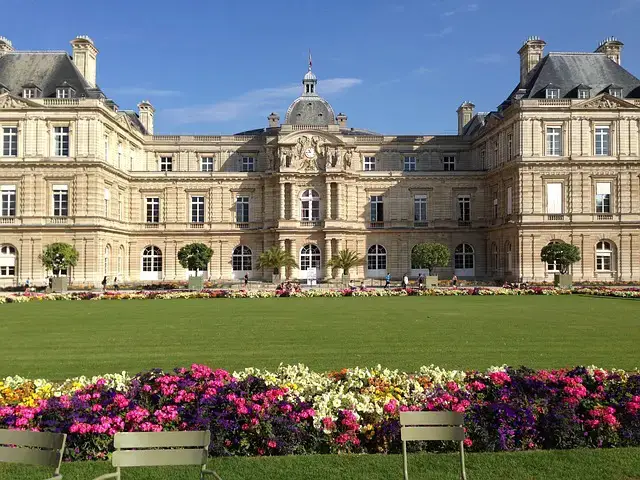
One of the capital’s largest parks, the Jardin du Luxembourg, is renowned for its charm and serenity.
It offers a peaceful escape from the hustle and bustle of the city, with vast lawns, shady walkways, colorful flower beds, and superb fountains.
At the heart of the garden is the Palais du Luxembourg, home to the French Senate. The palace is surrounded by a magnificent formal garden, with parterres of pruned boxwood and statues of historical figures.
Highlights:
- Its large, pleasant and relaxing green spaces
- Statues decorating the garden
Odéon Théâtre de l’Europe
Place de l’Odéon, 75006 Paris
Voir cette publication sur Instagram
Founded in 1782, the Odéon theater is one of the oldest in Paris.
It is renowned for its varied programming, including classical, contemporary, experimental, and international plays.
It is particularly renowned for its commitment to European theater, fostering exchanges and collaborations between artists from different countries.
Highlights:
- The magnificent architecture
- Its varied performances
Saint-Michel Fountain
Place Saint-Michel, 75005 Paris
Voir cette publication sur Instagram
A popular meeting point in the Latin Quarter, the Fontaine Saint-Michel features a neo-Gothic and neo-Renaissance style, dedicated to the Archangel Michael.
Also adorned with numerous sculptures and reliefs depicting mythological and allegorical characters, such as mermaids, tritons, and personifications of the arts and sciences, the fountain is a jewel of 19th-century art.
Highlights:
- the statue’s virtuoso detailing
- The charm it brings to the neighborhood
Saint-Germain Covered Market
4-6 rue Lobineau, 75006 Paris
Voir cette publication sur Instagram
The Saint-Germain covered market is a popular spot for gourmets and lovers of fresh, quality produce.
It offers a wide variety of stalls where you can find fresh fruit and vegetables, bakery products, charcuterie, cheese, seafood, meats, spices, wines, and many other culinary specialties.
The market is housed in a renovated historic building, offering a charming and ideal setting for shopping, discovering local produce, and savoring the atmosphere typical of Parisian markets.
It’s a must-see destination for food lovers and those keen to discover authentic local flavors.
Highlights:
- The wide variety of products on offer
- The charming and typical setting of this Parisian market
Arab World Institute
1 rue des Fossés Saint-Bernard, 75005 Paris
Voir cette publication sur Instagram
Founded in 1980, the Institut du Monde Arabe’s mission is to promote and disseminate Arab culture through a variety of artistic and intellectual forms.
The institute houses a library, media library, exhibition halls, conference rooms, and spaces dedicated to music, cinema, and dance.
It offers a rich and varied program, including exhibitions, shows, concerts, conferences, and film screenings highlighting the diversity and richness of Arab culture.
Highlights:
- The journey to the Arab world
- The many cultural events taking place there
Le Procope
13 rue de l’Ancienne Comédie, 75006 Paris
Voir cette publication sur Instagram
Founded in 1686, Le Procope is the oldest café-restaurant in Paris.
Located in a historic building in the Latin Quarter, it has played host to many famous writers and intellectuals, including Voltaire and Rousseau.
Enjoy classic French cuisine in a setting reminiscent of the Age of Enlightenment.
Highlights:
- The unique atmosphere of Paris’ oldest café-restaurant
- Refined French cuisine
La Tour d’Argent
19 Quai de la Tournelle, 75005 Paris
Voir cette publication sur Instagram
Nestling on the banks of the Seine, La Rôtisserie d’Argent is a renowned restaurant with a breathtaking view of Notre-Dame Cathedral.
It’s famous for its blood duck and exceptional wine cellar, boasting over 450,000 bottles.
This historic venue was founded in 1582 and has welcomed many dignitaries and celebrities over the centuries.
Highlights:
- The breathtaking view of Notre-Dame
- Its unusual blood duck and well-stocked wine cellar
La Jacobine
59-61 rue Saint-André des Arts, 75006 Paris
Voir cette publication sur Instagram
This picturesque restaurant is housed in a former 17th-century bakery.
It offers traditional French cuisine with a touch of originality.
Enjoy dishes such as onion soup au gratin, Burgundy snails, or duck confit in a charming, rustic atmosphere right in the heart of Paris.
Highlights:
- The original menu
- Charming, rustic ambiance in the heart of Paris
Lapérouse
51 Quai des Grands Augustins, 75006 Paris
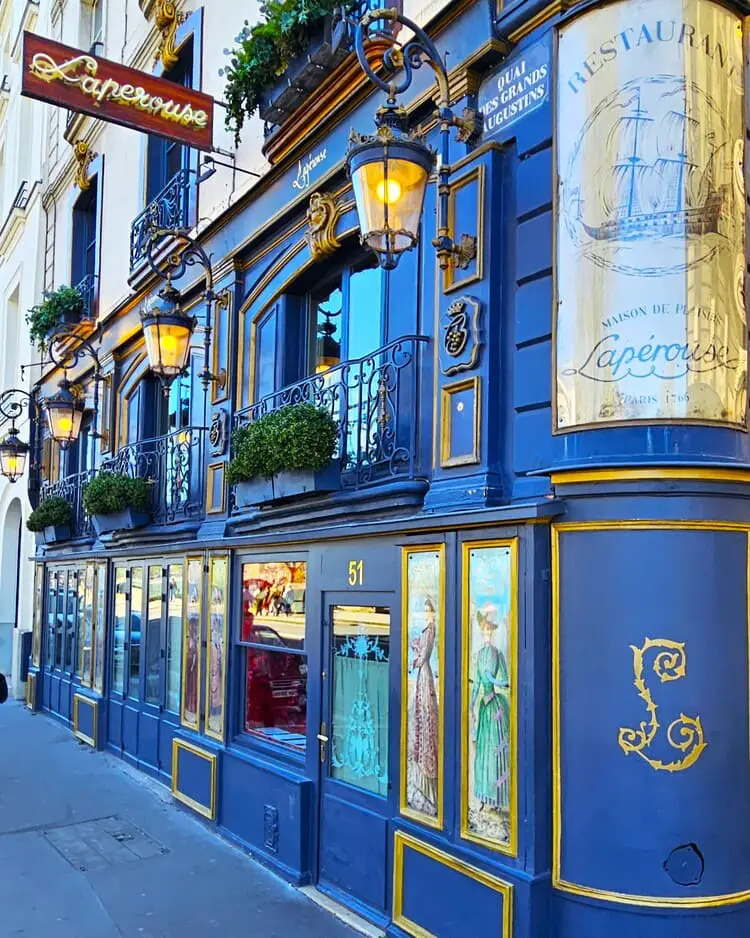
Lapérouse is one of the oldest and most famous restaurants in Paris, dating back to the 18th century.
Inside, it feels like a palace, with chandeliers, mirrors, velvet seats, and little private rooms where writers and artists once dined.
It’s known for its elegant French food and romantic atmosphere. Even if you don’t eat there, it’s fun to admire from outside as you walk along the Seine.
Highlights:
- Historic interior with private dining rooms
- Elegant setting loved by writers and artists

With a passion for travel and having visited over 50 countries, Dorian is eager to share his favorite spots and expert tips to help you explore Paris and France like a local.

